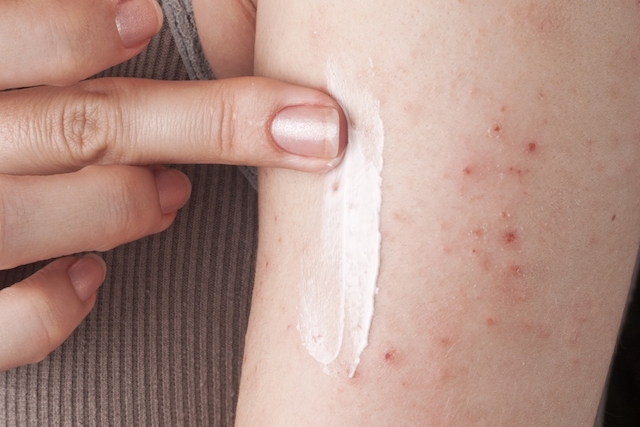- When to fill the tooth
- How the filling is done
- What you can feel after treatment
- Can a pregnant woman do a filling?
- Why filling is important
- How to treat caries without anesthesia and without pain
The treatment to eliminate cavities, also known as filling, is done by the dentist and consists of removing the caries and all the infected tissue, after which the tooth is covered with a substance that can be resin, amalgam, porcelain or gold.. The price of a filling is approximately 100 reais per tooth.
Currently there are 2 ways to perform this treatment: with anesthesia and a drill to scrape all caries or with a gel called Papacárie, which manages to soften the caries and eliminate all the injured tissue, in a simple, fast and painless way, being an excellent option for those who are afraid to go to the dentist.

When to fill the tooth
Dental filling is indicated to eliminate caries, removing it completely. The person may suspect that he has a tooth decay if he observes that there is a small hole, a black spot or a dark spot on the tooth and, to confirm it is necessary to go to the dentist. Learn how to identify and treat tooth decay.
To make the diagnosis the dentist has to look at the teeth with a small mirror and some sharp instruments to check if there is local pain and it may also be necessary to do an X-ray to assess the health of the gums and the root of the teeth. See how the panoramic radiography of the mandible and jaw is performed.
How the filling is done
To fill the dentist:
- Removes the part of the tooth that is damaged, with the help of a dental drill, laser or papacy gel; Clean the decayed tooth with a small curette (if using the gel) or scrape the region with the little motor; Put resin to fill the hole; Sand the resin to adjust the height of the tooth.
Currently, filling is done with resin, which is a white tooth-colored material, which is practically imperceptible and safer than older restorations. These were made with a gray substance called amalgam, which contained mercury in its composition, and for that reason, it has no longer been used.
The old fillings made with gray amalgam, must be replaced by resin whenever they fall, causing dark stains on the teeth or for safety reasons, since resin fillings are safer for health, because they do not contain heavy metals like mercury.
What you can feel after treatment
If filling is performed with Papacárie gel, there is no need for anesthesia and therefore the person leaves the office without feeling any discomfort. But if the dentist opts for anesthesia and using a drill, the effect of the anesthesia can last for a few hours and the person should feel their mouth numb, tingling and have difficulty speaking and eating. Know what to do for anesthesia to pass faster.
Can a pregnant woman do a filling?
Pregnant women have a higher risk of developing gingivitis and cavities due to the common hormonal changes of this stage and that is why it is important to go to the dentist at least twice during pregnancy to assess oral health in order to treat any cavities before complications occur. Check out 5 precautions to fight cavities and gingivitis in pregnancy
Dental treatments in pregnancy can be done in any trimester, however, it is recommended that, whenever possible, be done in the second trimester, especially if it is the case of treatment for cavities or other treatments that require anesthesia or that directly affect the gum. This is because, it is in the first trimester that the highest rate of organ formation occurs in the baby and, therefore, dentists keep these types of treatments for cases of greatest emergency during this period.
In the third trimester, there is a greater risk of side effects, such as a marked decrease in blood pressure, since the baby is larger and may end up putting pressure on the organs of the pregnant woman. During this period, if any type of treatment is needed, the dentist should avoid long treatment sessions.
In the case of papacy gel, treatment can be done in any trimester of pregnancy.
Why filling is important
It is important to do the filling whenever the tooth is decayed because the decay can pass to the other teeth and also to other people through kissing and sharing glasses and cutlery, for example.
In addition, caries increases in size and may allow the installation of viruses, bacteria and food that can aggravate the situation, even favoring the need for other treatments such as the canal or even tooth removal and tooth loss. it is necessary to put a prosthesis in place or use a denture.
How to treat caries without anesthesia and without pain

An excellent way to eliminate caries is to use the gel called Papacárie, which is made from papain, found in papaya, which completely removes caries from the tooth without requiring anesthesia, nor use the 'little motor' to scrape the tooth.
This treatment with Papacárie gel must also be performed in the dentist's office, because it must be applied inside the decayed tooth, and must act for about 1 minute. Then, the place must be carefully cleaned by the dentist using a manual instrument called a curette, which removes caries and injured tissue, without any pain or discomfort. Next, the dentist should cover the tooth with a 'clay' of resin so that the tooth can be completely restored.
This new treatment for caries with the Papacárie gel is excellent for treatment in children and the elderly, who have more difficulty in supporting the treatment commonly done by the dentist, but can be used at all ages, including pregnancy.
Watch the following video and learn how to prevent tooth decay:















